Summer Hair Care: 7 Tips to Protect Hair From The Sun
INTRODUCTION
- As temperatures rise and the sun shines brighter, your hair needs just as much protection as your skin.
- Prolonged sun exposure can lead to dry, brittle, and discolored hair, stripping it of its natural moisture and shine.
- Whether you’re relaxing at the beach or simply running errands under the blazing sun, it’s essential to adopt a Summer Hair Care routine that defends against UV damage.
- Here are seven expert-approved tips to shield your strands and keep them healthy all summer long.
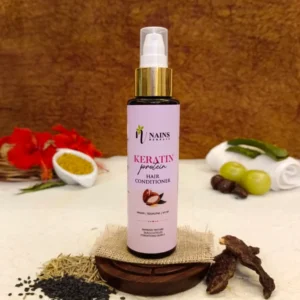
1. Shield Your Hair with a Hat or Scarf
- Your hair silently suffers from strong UV rays during the hottest parts of the day, which can lead to frizz, dryness, color loss, and even breakage.
- When exposed to direct sunlight, donning a scarf or cap is one of the easiest yet most efficient ways to mitigate this problem.
- Function and protection are more important than merely style.
- Consider it your hair’s version of sunblock.

- Many people don’t realize how damaging sunshine can be to their hair until they start to notice obvious symptoms.
- Long-term sun exposure can cause brittle strands, frizz, broken ends, and faded hair color.
- If you spend a lot of time outside in the summer, whether for weekend brunches, beach getaways, or daily commutes, you may have noticed that your hair appears more unkempt or feels drier.
- Your hair is wailing for safety.
- A physical barrier between your hair and damaging UV radiation is created when you cover it with a scarf or cap.
- Unlike hair products, it is an immediate protection that doesn’t need to be applied or reapplied.
- Dermatologists and trichologists claim that UV rays can weaken the structure and decrease moisture retention of your hair by penetrating the cuticle, which is the outermost covering of your hair shaft.
- Color-treated or chemically processed hair, which is already susceptible, is even more affected.
- Experts advise choosing accessories with a UPF (Ultraviolet Protection Factor) rating or those composed of tightly woven fabrics.
- These guarantee the highest level of protection for your scalp and hair.
- If scarves are your preferred material, look for silk or lightweight, breathable cotton.
- In addition to protecting your hair, they also lessen perspiration on your scalp and prevent humidity-induced frizz.
- The finest covering for hats is offered by wide-brimmed types or bucket hats, which protect your face, neck, and scalp in addition to providing additional protection.

- The finest aspect? This advice is inexpensive and simple to use.
- Adding a hat to your everyday attire can help prevent UV damage without the need for costly salon treatments.
- Hats and scarves don’t fade and don’t need to be maintained like chemical items do.
- They are portable, reusable, and adaptable to any ensemble. Silk-lined caps or a leave-in conditioner before covering your hair will also help retain moisture and lessen friction if you’re worried about “hat hair.”
2. Use UV-Protectant Hair Products
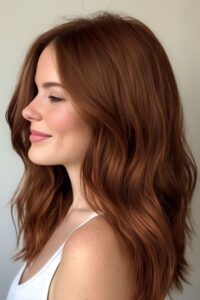
- Everyone knows how important it is to use sunscreen to protect their skin from the sun’s damaging rays, but what about their hair? UV rays can cause dryness, discolouration, breakage, and a loss of luster in hair, just like they can in skin.
- UV-protectant hair treatments, such leave-in conditioners or sprays enhanced with UV filters, are among the easiest and most efficient ways to shield your hair from the damaging effects of the sun.
- During the summer, many people observe that their hair loses its vivid color or gets frizzier or more brittle.
- This is particularly true for people whose hair has been chemically processed, bleached, or colored. Color fading and dullness are caused by the sun’s UV rays, which work like bleach to break down the natural pigments in hair and weaken the cuticle layer.
- Summer Hair Care You have direct experience with sun damage if you have ever come home from a beach vacation or extended outdoor activity to discover your hair looking faded or feeling straw-like.
- Thankfully, hair products that block UV rays can be helpful.
- By reflecting or absorbing UV rays and keeping them from entering the hair shaft, these products provide an imperceptible barrier on the surface of your hair.

- Dermatologists and hairdressers concur that UV-filtered leave-in conditioners and sprays are essential for summertime hair care.
- These products frequently contain ingredients like benzophenone-4, octinoxate, cinnamates, and avobenzone, which function similarly to sunscreens for the face.
- They lessen oxidative stress on the hair fibers and aid in the absorption of damaging radiation.
- Similar to how you would apply SPF to your face, professional stylists advise using UV-protectant products prior to exposure to the sun.
- These products are an excellent all-in-one summertime solution because many of them also provide further advantages like hydration, detangling, frizz control, and thermal protection.
- These goods are easily incorporated into your everyday routine, reasonably priced, and generally accessible.
- If you have fine, curly, oily, or color-treated hair, look for light, non-greasy products that work for you.
- While creams and leave-ins provide deeper nourishment, sprays are excellent for fast applications.
- Distribute your selected UV-protectant evenly throughout your hair, whether it is damp or dry.
- As with conventional sunscreen, reapply if you’re swimming, perspiring, or spending a lot of time in the sun. For optimal results, always adhere to the product’s instructions.
- Pro tip: For an extra line of defense, use these protectants in conjunction with other strategies like donning a helmet or sporting protective hairstyles.
3. Avoid Excessive Heat Styling
- Your hair already has to contend with the harsh conditions of summer, including UV radiation, humidity, seawater, and chlorine.
- The stress on your hair is only increased when you use styling products like blow dryers, curling wands, and flat irons to provide more heat.
- Limiting the use of these techniques throughout the summer will greatly improve the resilience and health of your hair, even though they might help you get the style you want.

- You’re not alone if you’ve ever observed that your hair gets frizzy, dry, or brittle following a summer trip.
- Unknowingly adding heat damage to sun exposure causes many people’s hair to become lifeless and drab.
- Long-term exposure to high temperatures damages the hair cuticle, removes natural moisture, and causes split ends, even though heat-styled hair may seem nice for a short time.
- People who intentionally cut back on using heat tools during the summer frequently observe that their hair gets shinier, easier to manage, and less prone to damage.
- During this season, adopting preventive hairstyles, heatless curls, or air-drying methods might have a significant impact.
- Heat styling products can reach temperatures of 350 to 450°F (175 to 230°C), which trichologists and hair specialists say can cause significant damage, particularly to hair that is already exposed to UV rays and environmental stress.
- Dryness and breakage result from the quicker removal of moisture from your hair when it is exposed to both UV light and artificial heat.
- As much as possible, experts advise air-drying your hair, particularly after swimming or perspiring. Use a heat protectant spray first if you must use a heat styling instrument.
- By forming a barrier between your hair and the heat, these sprays reduce the possibility of damage.
- Additionally, maintain tools on the lowest effective temperature setting and limit style to no more than twice a week.

- Professional stylists and well-known haircare companies always recommend avoiding heat during the hot months.
- To avoid seasonal hair breakage, the American Academy of Dermatology advises reducing thermal and mechanical stress.
- Several studies demonstrate that frequent heat styling combined with sun exposure causes oxidative stress, a condition in which free radicals break down the protein structure of hair.
- Over time, this weakens the shaft and results in noticeable thinning and dullness.
- Summer is also a perfect time to experiment with low-maintenance, protective hairstyles that safeguard your hair from environmental harm, like loose ponytails, buns, twists, and braids.
- These styles require little to no heat.
- This is a quick, easy, and cost-free tip. Cutting back on heat styling saves you time and effort in addition to protecting your hair.
- Your hair will naturally recuperate and maintain vital moisture if you give it a vacation from using equipment.
- Use leave-in conditioners to control frizz, use heatless curl techniques like braiding or soft rollers, and use microfiber towels to gently pat dry your hair.
- For healthier hair in the summer, these techniques are favored by hairstylists, beauty influencers, and regular people.
4. Keep Hair Hydrated
- Even though summer is all about sunshine and beach days, it frequently spells dryness, frizz, and dehydration for your hair.
- In warmer weather, our hair requires more moisture, just like our skin.
- The natural oils that maintain hair strong and soft are removed by the sun’s UV rays, salty seawater, and chlorinated swimming pools.
- It’s crucial to use hydration masks or weekly conditioning treatments to keep your hair properly moisturized so it can fight back.

- During the summer, many people observe that their hair becomes straw-like, brittle, or tough.
- These symptoms point to damage and moisture loss. Your hair’s moisture barrier has probably been weakened if you’ve ever had knotted, dry ends that seem lifeless or drab after being in the sun.
- Summertime hydration routines, such as using deep conditioners, hair masks, or hydrating leave-ins, are frequently accompanied by smoother texture, easier manageability, and less breakage.
- In addition to being healthier, moisturized hair feels softer and has a glossier appearance.
- Hair care experts agree that staying hydrated is crucial, especially in warmer climates. When hair loses moisture, its outer layer, or cuticle, lifts and becomes more porous, allowing more moisture to leave and causing damage from the outside in.
- During this cycle, split ends and excessive dryness may occur.
- To combat this, experts recommend using deep-conditioning masks at least once a week.
- Look for ingredients like glycerin, shea butter, coconut oil, argan oil, hyaluronic acid, and panthenol that have been shown to penetrate the hair shaft and seal in moisture.
- Additionally, by keeping hair hydrated throughout the day, hydrating leave-in conditioners help protect it from further dehydration.

- Moisture-rich treatments are a key part of summer hair care, according to top haircare manufacturers and stylists worldwide.
- Dehydrated hair becomes more porous, structurally weaker, and more vulnerable to UV-induced protein loss, per research published in beauty scientific journals.
- In order to promote healthy hair development from the inside out, organizations such as the American Academy of Dermatology urge people to prioritize internal hydration, which involves drinking a lot of water.
- The good news is that costly products or salon services are not necessary to maintain moisturized hair. DIY hair masks created with materials like yogurt, honey, bananas, or avocados are among the many reasonably priced and efficient at-home treatments.
- These organic components aid in restoring elasticity and moisture because they are high in vitamins and fatty acids.
- Avoiding excessive hair washing in the heat is also crucial. To preserve equilibrium, use sulfate-free shampoos and concentrate on conditioning because frequent washing depletes natural oils.
- Applying a conditioner or mask to damp (but not drenched) hair and leaving it on for 10 to 20 minutes before washing will help seal in moisture.
- To distribute the substance evenly to avoid breakage, use a wide-tooth comb.
5. Rinse Hair After Swimming
- Swimming in the summer is a terrific way to cool off, whether you’re enjoying the waves or plunging into a chlorinated pool, but it’s not so good for your hair. I
- f not thoroughly rinsed off, chlorine and saltwater can cause severe dryness, brittleness, and even discoloration.
- Rinsing your hair with fresh, clean water right after swimming is therefore an essential component of any summertime hair care regimen.
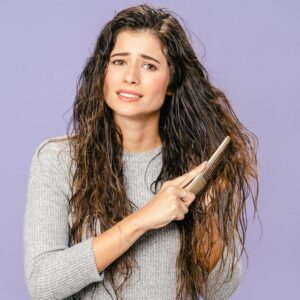
- The symptoms of chlorine damage are obvious to anyone who has spent time in a pool: a straw-like texture, greenish tones on blond hair, and a strong chemical odor.
- Despite being more natural, saltwater depletes your hair of its natural oils, leaving it knotted and dry. Hair may feel scratchy, sticky, or unmanageable after a day at the beach.
- The consequences are frequently more obvious for regular swimmers, particularly those with chemically processed or color-treated hair.
- However, even with frequent contact to water, people who regularly rinse their hair with clean water after swimming report softer, healthier strands.
- Hair care experts stress how crucial it is to rinse right away after coming into contact with salty or chlorinated water.
- This is the reason: Although chlorine is a harsh chemical that is designed to eradicate bacteria from swimming pools, it is unable to distinguish between germs and the natural oils that are present in your scalp.
- It attaches itself to your hair’s proteins, causing cuticle damage, dryness, split ends, and even breaking.
- The drying effect is same for saltwater. Its high quantity of salt causes the hair shaft to lose moisture, damaging its structure.
- Both saltwater and chlorine can remove color pigments from color-treated hair, resulting in fading or uneven tones.
- Rinsing with clean water both before and after swimming is advised by experts.
- To lessen the absorption of salty or chlorinated water, wet your hair with fresh water first.

- Professional and recreational swimmers alike have embraced this straightforward, scientifically supported tip. All you need is access to clean water; costly items are not necessary.
- After your hair has been exposed to harmful factors, the simplest and first line of defense is to rinse it.
- Use a mild, sulfate-free shampoo and a hydrating conditioner to restore equilibrium after the rinse for optimal effects.
- Have a bottle of clean water in your bag so you can quickly rinse off if you’re at the beach or pool without access to a shower.
6.Trim Split Ends Regularly
- Your hair is subjected to heat, UV rays, humidity, seawater, and chlorine throughout the summer, all of which can cause extreme dryness and damage.
- Split ends are among the most obvious symptoms of severe injury. If left untreated, these frayed tips not only detract from the way your hair looks, but they also cause more breaking.
- For this reason, getting frequent summertime haircuts is crucial to maintaining the health and appearance of your hair.
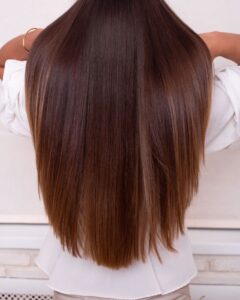
- Ironically, split ends might undermine the purpose of many people who attempt to forgo haircuts in order to grow their hair long.
- Breakage, thinning, and an untidy appearance can result from damage that travels upward when the hair shaft splits at the end.
- These problems can worsen rapidly, particularly during the summer when your hair is more susceptible to environmental damage.
- There is a noticeable difference for those who regularly trim their hair every 6 to 8 weeks: their hair feels stronger, smoother, and easier to manage.
- They stop additional splitting and promote long-term, healthier growth by trimming off split or dry ends.
- Regular haircuts are always advised by hair stylists as a component of a healthy hair care routine. Licensed stylists claim that no product can permanently fuse a split hair shaft and that split ends do not mend themselves.
- Split ends can be momentarily made to look smoother with serums and masks, but trimming is the only practical way to address the issue.
- Additionally, experts stress that regular short trims, even if they are only a quarter inch, can maintain your hair in great condition without compromising your overall length objectives.
- As damage accumulates, regular trimming actually helps avoid the need for severe chops later.
- Split ends can develop more quickly in the summer due to summer-specific elements like sun exposure, chlorine, heat style, and saltwater, which makes trimming even more important during these months.

- Professionals and regular haircare aficionados alike trust this advice since it is easy to follow, works, and doesn’t call for pricey products or a convoluted process.
- The secret is consistency, whether you cut your ends at home with clean, sharp shears or in a salon.
- Examine the ends of your hair carefully to check for split ends; if you notice any fraying, white spots, or uneven textures, it’s time for a trim.
- For improved visibility, use a magnifying mirror and natural light. Additionally, dull scissors might exacerbate the split, so stay away from them.
7. Opt for Loose, Protective Hairstyles
- The last thing you want is for your hair to get frizzy or stick to your neck when the temperature soars and the humidity rises.
- However, summertime can also result in knots, breakage, and tension on the scalp in addition to discomfort. Loose, protecting hairstyles are useful in this situation. In addition to keeping you fashionable and cool, wearing hairstyles like braids, buns, or ponytails helps protect your hair from the sun, lessen friction, and help preserve moisture.
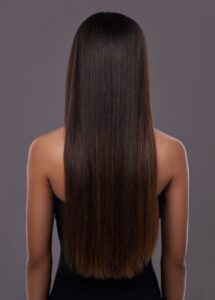
- In the summer, those with long or textured hair may experience more hair breaking and loss. It’s easy for loose hair to become tangled in the wind or dry out from exposure to the sun.
- Protective hairstyles that not only look stylish but also stop everyday wear and tear are a source of comfort for many.
- Summertime hairstyles that help keep your hair neat while reducing direct UV exposure and friction from perspiration include braids, loose buns, and low ponytails.
- Users who choose these styles on a regular basis report less breakage, fewer knots, and a healthier scalp overall, especially when using moisturizing leave-in products.
- Additionally, these styles help shield chemically processed or color-treated hair from additional environmental harm.
- During the summer, hairdressers frequently suggest preventive styles, especially for people with processed, curly, or coily hair.
- In warmer weather, when the scalp is more sensitive, tight hairstyles can weaken hair follicles and cause tension-related hair loss or thinning, according to experienced stylists.
- Conversely, loose, securely fastened hairstyles keep the hair healthy by lowering stress on the scalp and hair shaft.
- Protective styles aid in reducing brushing and manipulation, two main causes of breaking.
- Experts suggest using soft scrunchies, satin-lined accessories, or spiral hair ties to softly secure your look rather as rubber bands or metal clips that pull at hair.
- Leading trichologists and hairdressers worldwide concur that protecting your hair in hot weather is important for the health of your hair, not simply for appearance.
- Protective styles have long been a customary and useful haircare method in many African and Caribbean societies, particularly in inclement weather.
- In advertisements and instructional videos, the beauty industry has pushed protective styling more and more, highlighting the ways in which these methods may help maintain moisture, length, and avoid damage.
- For people with sensitive skin or scalp disorders, physicians even suggest protective hairstyles as a component of scalp care.
- Protective styles are tried-and-true, simple, and affordable. They only need a few bobby pins, a soft scrunchie, and maybe some style lotion or gel; salon visits are not necessary.
- Styles like a low puff, a soft bun, or a loose side braid keep your hair secure and minimize sun exposure whether you’re running errands or traveling to the beach.
- Additionally, they are excellent at reducing perspiration around the scalp, which promotes comfort and hygiene.
- To avoid frizz and friction during the night, wrap your protective style in a satin or silk scarf.
FAQS
Q1: Why is sun exposure harmful to my hair?
Just like your skin, your hair is vulnerable to UV radiation. Prolonged sun exposure can dry out hair strands, fade color, weaken the hair shaft, and make your hair prone to breakage and split ends.
Q2: How often should I trim my hair during the summer?
It’s recommended to trim your hair every 6 to 8 weeks during summer. This helps remove split ends and minimizes breakage caused by sun, saltwater, and chlorine exposure.
Q3: What are UV-protectant hair products, and do I really need them?
UV-protectant hair products—like sprays, leave-ins, and serums—contain filters that block harmful sun rays. They help preserve hair color, prevent dryness, and maintain overall hair health, especially in sunny months.
Q4: Are hats and scarves really effective for protecting hair?
Yes! Wide-brimmed hats and lightweight scarves act as a physical barrier against UV rays. They prevent direct sun exposure, which significantly reduces the risk of hair damage.
Q5: Can I use regular sunscreen on my hair?
No. Regular sunscreen is formulated for skin and can leave hair greasy or sticky. Always use products specifically designed for hair with UV protection.
Q6: How can I protect my hair while swimming in a pool or ocean?
Rinse your hair with fresh water before and after swimming. Apply a leave-in conditioner to create a protective layer, and wear a swim cap if possible. This helps reduce the absorption of chlorine and salt.
Q7: Are there any DIY hair masks for summer hydration?
Yes! You can try natural masks using ingredients like aloe vera, coconut oil, honey, and yogurt. These ingredients deeply moisturize and restore softness to sun-damaged hair.
Q8: Should I stop using heat styling tools in the summer?
It’s best to minimize the use of flat irons, curling wands, and blow dryers during hot months. Let your hair air-dry whenever possible to reduce heat stress and prevent further dryness.
Q9: What are some easy protective hairstyles for hot weather?
Loose braids, buns, ponytails, and twists are great protective styles. They minimize friction, limit sun exposure, and help retain moisture while keeping you cool and stylish.
Q10: How do I maintain colored or chemically-treated hair in the summer?
Use sulfate-free shampoos, UV-protectant sprays, and deep-conditioning treatments. Limit sun exposure and avoid chlorinated pools to prevent color fading and dryness.
